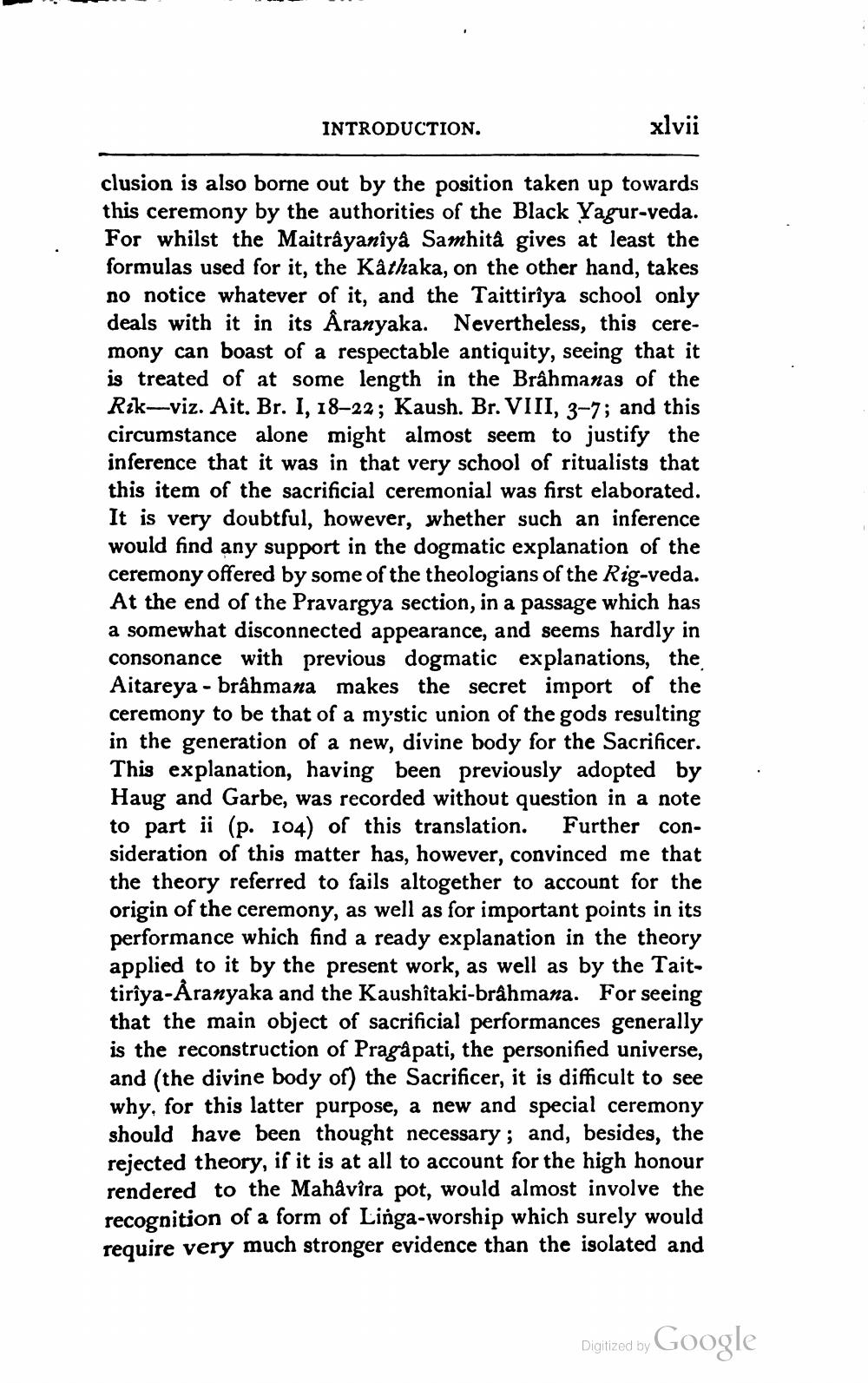________________
INTRODUCTION.
xlvii
clusion is also borne out by the position taken up towards this ceremony by the authorities of the Black Yagur-veda. For whilst the Maitrậyaniya Samhità gives at least the formulas used for it, the Kathaka, on the other hand, takes no notice whatever of it, and the Taittiriya school only deals with it in its Åranyaka. Nevertheless, this ceremony can boast of a respectable antiquity, seeing that it is treated of at some length in the Brahmanas of the Rik-viz. Ait. Br. I, 18–22; Kaush. Br. VIII, 3-7; and this circumstance alone might almost seem to justify the inference that it was in that very school of ritualists that this item of the sacrificial ceremonial was first elaborated. It is very doubtful, however, whether such an inference would find any support in the dogmatic explanation of the ceremony offered by some of the theologians of the Rig-veda. At the end of the Pravargya section, in a passage which has a somewhat disconnected appearance, and seems hardly in consonance with previous dogmatic explanations, the Aitareya - brâhmana makes the secret import of the ceremony to be that of a mystic union of the gods resulting in the generation of a new, divine body for the Sacrificer. This explanation, having been previously adopted by Haug and Garbe, was recorded without question in a note to part ii (p. 104) of this translation. Further consideration of this matter has, however, convinced me that the theory referred to fails altogether to account for the origin of the ceremony, as well as for important points in its performance which find a ready explanation in the theory applied to it by the present work, as well as by the Taittirîya-Aranyaka and the Kaushitaki-brâhmana. For seeing that the main object of sacrificial performances generally is the reconstruction of Pragâ pati, the personified universe, and (the divine body of) the Sacrificer, it is difficult to see why, for this latter purpose, a new and special ceremony should have been thought necessary; and, besides, the rejected theory, if it is at all to account for the high honour rendered to the Mahavira pot, would almost involve the recognition of a form of Linga-worship which surely would require very much stronger evidence than the isolated and
Digitized by Google




